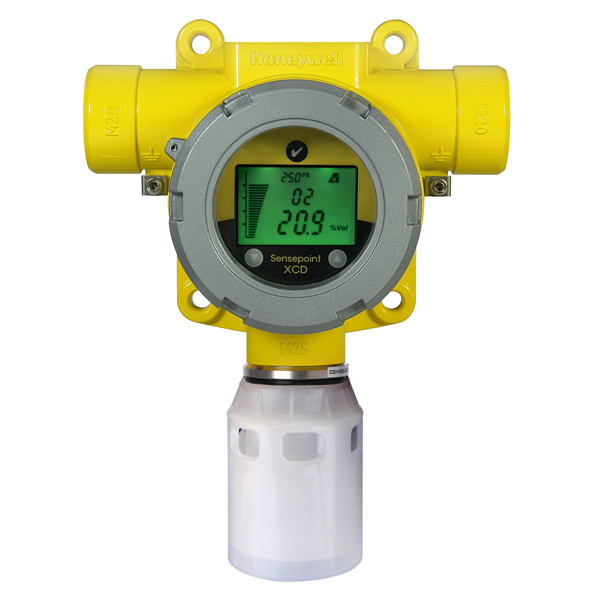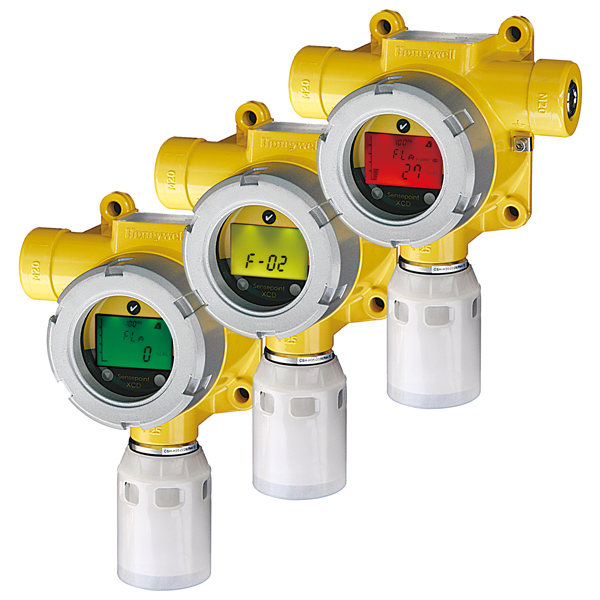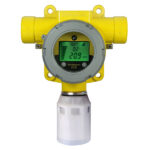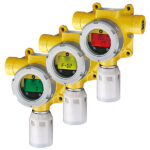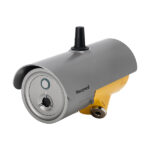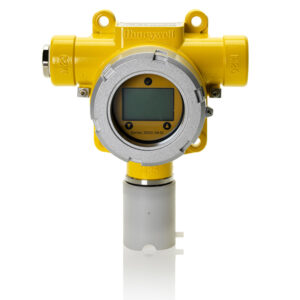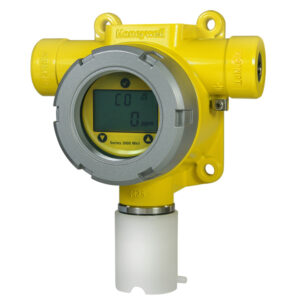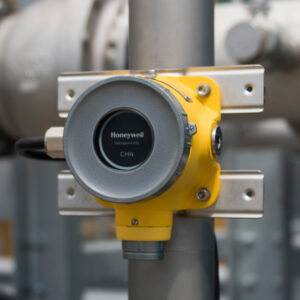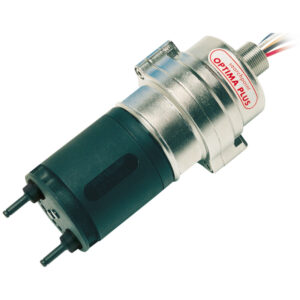Gas
Choose an option CO CO2 H2 H2S LEL NO2 O2 Gas Carbon Monoxide
The silent killer, one of the most dangerous and insidious gases, the product of incomplete combustion of fossil fuels. The gas is tasteless and odorless, transparent, unrecognizable, and accumulates in the blood (hemoglobin) with an affinity 240 times higher than oxygen! Concentrations of 300 parts per million in the air (ppm) are already deadly to an adult.
Even the lowest concentrations accumulate in the blood, so the Short Time Exposure Limit (STEL) or maximum allowed accumulated exposure concentration is only 20 ppm, and the daily 8-hour maximum allowed average accumulated exposure (TWA - Time Weighted Average) is 100 ppm. There is a great danger in homes that use fossil fuels, and it is part of the process in ironworks, power plants, petrochemicals, etc.
The standard settings for the lower and upper alarm thresholds are 20 ppm and 100 ppm, and gas also accumulates in the body, so the standard STEL Limit is also 100 ppm, with a TWA limit of 20 ppm.
Carbon Dioxide
Carbon dioxide is a colorless, tasteless and odorless gas, heavier than air, whose current concentration in the Earth's atmosphere is approx. 450 ppm. It is a product of the breathing of living creatures and combustion of fossil fuels. It is absorbed by green plants and used in the process of photosynthesis. The main greenhouse gas is responsible for heating the atmosphere. The gas itself is not toxic or flammable, but its high concentrations can push out oxygen from the room and cause suffocation. Its higher concentration in room is a sure indicator of the presence of living creatures, so this fact is used when detecting the illegal transport of people or animals. It is an essential element for measuring the overall air quality. Its industrial application is very wide - it is used in the food and pharmaceutical industry, natural gas production, winemaking, fire alarm, refrigeration, agriculture, medicine, as an inert gas in compressors and welding processes and as a general pressurizer. Concentrations of 7% -10% (70,000 - 100,000 ppm) in the air can cause suffocation. Acceptable concentrations in closed working spaces are up to approx. 2,500 ppm, above this limit there may be a general deterioration in work efficiency (drowsiness, fatigue, mental slowness).
Typical detector alarm settings within the EU range Low = 5,000 ppm, High = 30,000 ppm, TWA = 5,000 ppm, STEL = 30,000 ppm. CO2 detectors, due to their wide application in practically every segment of life, are becoming more and more noteworthy.
Hydrogen
The first, easiest and ubiquitous element in the universe. Due to its low density, it "escapes" into space, so there is not much of it on Earth in its pure form. It is part of industrial processes, especially in the petrochemical, petroleum and food industries. It is part of the green energy of the future. Hydrogen is not toxic to the human body, but it is extremely flammable and explosive, so the main risks and dangers lie in that fact. Its flammability / explosive range ranges from 4.00% (LEL) to 77.00% (UEL) by volume (v / v) in air.
The standard limits of alarm settings in ppm are Low = 100 ppm, High = 400 ppm.
Hydrogen Sulfide
Hydrogen sulfide is a poisonous, colorless and corrosive gas that occurs as a by-product of the decomposition of organic matter without the presence of oxygen (wetlands, sewage) by anaerobic microorganisms. It also occurs in volcanic gases, geothermal springs and along deposits of natural gas (up to 30%) and crude oil. It also occurs in the human body as a product of metabolism, and even in the breath in some disorders. The largest industrial emitters of hydrogen sulfide are oil refineries (oil hydrodesulfurization process - HDS, Claus process), gas plants, petrochemicals, pharmaceutical industry, coke ovens, paper mills and sewage and drainage systems. The positive side of this very poisonous gas is that in very small concentrations (50 ppb) it can be felt as an unpleasant smell of rotten eggs so this is the first warning. However, with a rapid increase in concentration (which is most often the case), the mucous membrane and the sense of smell are paralyzed and the unpleasant odor completely disappears while the toxicity increases. At concentrations higher than 50 ppm, visual impairment occurs.
The standard settings for the lower and upper alarm thresholds are 5 ppm and 10 ppm, and gas also accumulates in the body, so the standard STEL Limit is 10 ppm, and the TWA limit is 5 ppm.
Flammable group of gases (Hydrocarbons)
They occur in practically every segment of life. The most famous representative is natural gas (methane, CH4), and the combinations of carbon and hydrogen molecules are practically unlimited. We use them as energy sources in all endothermic processes and in almost all industries (chemical, petroleum, pharmaceutical, petrochemical). The biggest problem is their flammability and explosiveness, and for the most part, toxicity. They are one of the biggest risks in all industries. Flammability directly depends on their concentration in the air mixture and ranges between LEL - Lower Explosive Limit and UEL - Upper Explosive Limit. At concentrations of 4.4% to 17% by volume of methane in the air, the spark causes an explosion, so 4.4% v / v CH4 = 100% LEL.
The standard limits of alarm settings within the EU are Low = 10% LEL, High = 20% LEL
Nitrogen Dioxide
Nitrogen (IV) oxide (Nitrogen dioxide) is a poisonous and reactive gas, also an oxidant that enhances combustion of flammable materials. It is reddish brown at 21.2 ° C, yellowish at lower temperatures. Inhalation of large quantities can be fatal for the human body. It is used intensively in the chemical and process industries, specialized laboratories and in pharmaceuticals, especially in sterilization processes. In the process industry, it is used for the synthesis of nitric acid, an important chemical raw material. It is one of the greenhouse gases produced by internal combustion cars, and low concentrations in polluted air have a negative effect on the airways, especially of more sensitive populations.
Standard settings of protection devices within the EU for NO2 range from Low = 0.5 ppm / High = 1 ppm, TWA = 0.5 ppm, STEL = 1 ppm.
Oxygen
Gas which is essential for life, in a concentration of 20.9% v / v makes our planet unique. It supports burning and is part of almost all natural and human created processes that take place on Earth. Concentrations below 16.0% v / v cause drowsiness and confusion, and below 6% v / v death. It is also dangerous in high concentrations because it increases the flammability of the material. Concentrations above 24.0% v / v may cause spontaneous combustion of clothing.
The standard limits of alarm settings within the EU are Low = 19.5% v / v, High = 23.5% v / v
Clear
